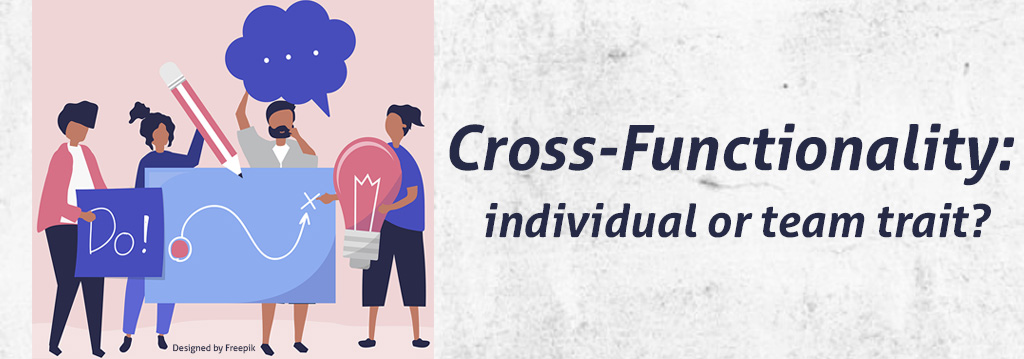
By Vineet Patni | 12 January 2023
How will it be if the entire cricket team has all the skills? On what basis will you decide who will be the batsman or who will spin next? Is this not less of a leisure and more of a dilemma? On this note, let me enhance your knowledge of Scrum by clearing the illusion that everyone in the Scrum Team must have all the skills. Oh, absolutely not! As a Scrum Team we should have all the skills, not just individually.
Scrum: Cross-Functionality and basics
Binding people with different skill sets to achieve one common goal is the basis of cross-functionality. A person can be functional, but working in an environment with other people can enhance productivity, and that is where cross-functionality exists. Hence, cross-functional is a term incidental to working within a team, not as individuals.
Scrum is an approach where work is allocated based on sprints. Each sprint is an iterative development cycle that is time-boxed, making Scrum most suited for complex work, thus magnifying the work done or value created.
Cross-Functionality: Need for diverse skills
In a dynamic business world where things are changing with every click and we are working in complex domains to stand out of the crowd, one needs a cohesive skillset within the teams to deliver a usable increment. Cross-functionality ensures diversity in skill sets and gives the entire Scrum team the advantage of delivering value in the best possible manner. The team requires various members to develop, code, test, and other skills to create software. For example, suppose you are building a mobile application, and the skills required to make the application must be end-to-end, from design, and coding, to testing. Imagine we come across a challenge. To overcome the challenge, we need a skill that the entire team is missing out on. What do we do now? As part of the cross-functional Scrum Team, the team members prefer to acquire the skills rather than always looking for them from outside.
Cross-functional teams are complete teams that have all the necessary skills to build something of value. For example, when chasing a target in a game of cricket, which is a complex domain, we are not aware of the twists and turns the game might take going forward. So, as and when the game progresses, only then can we start predicting the outcome, but not at the initial stage.
Cross-functionality: Value and delivery
One of the strengths of a cross-functional team is that it enables many departments to collaborate on accomplishing a shared objective. By fostering clear and concise communication, cross-functional teams would allow businesses to put the needs of their consumers (end users) and stakeholders first.
Key Learnings:
In conclusion, cross-functionality plays a vital role in the growth of a team in an organization. Here are the elements that contribute to a Scrum Team’s cross-functionality:
~ Providing a window for open communication between members.
~ All elected team members must be enthusiastic and open-minded.
~ Select team members who are experts to help you with the project.
~ Give cross-functional teams the freedom, authority, and accountability they need.
~ Select and appoint team leaders with excellent communication skills.
In Scrum, cross-functionality does not mean competing within the team but instead focusing on completing the team. Hence, we say that Cross Functionality is a team trait, not an individual trait.
About The Author:
Vineet Patni is the Founder and Principal Agile Coach at ScaleUp. An avid learner and a passionate facilitator, Vineet has been assisting enterprises and individuals in becoming truly Agile. Please feel free to connect with him at Vineet@ScaleUpConsultants.com .
Disclaimer: The opinions expressed in this post are the author’s own. The author welcomes and respects any difference of opinion.


Leave a Reply